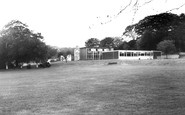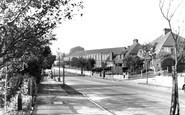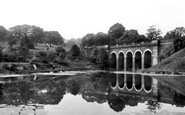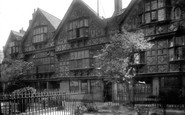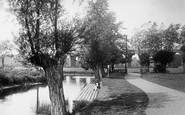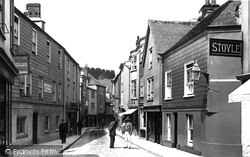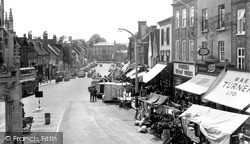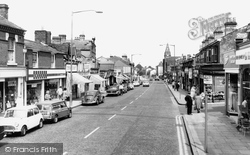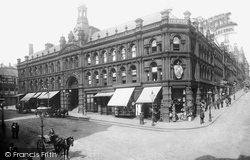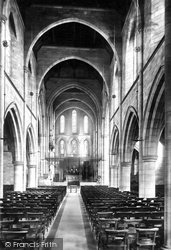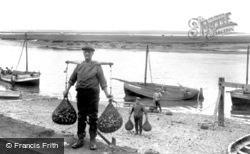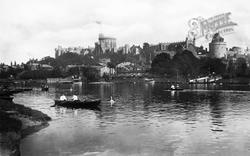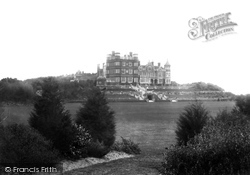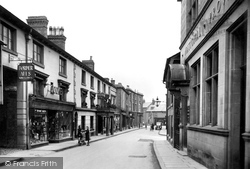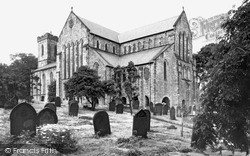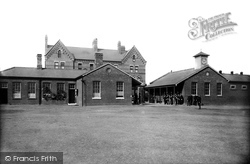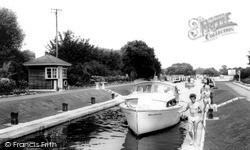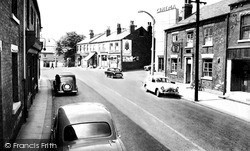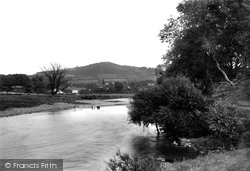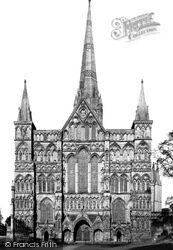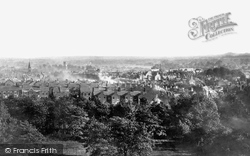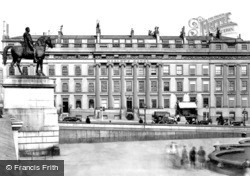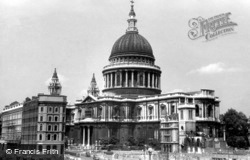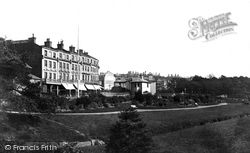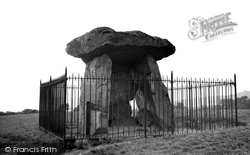Places
Sorry, no places were found that related to your search.
Photos
5 photos found. Showing results 821 to 5.
Maps
83 maps found.
Books
Sorry, no books were found that related to your search.
Memories
1,127 memories found. Showing results 411 to 420.
River Trent At Burton Joyce
One of the self-closing 'kissing gates' where the watercourse from under the Cattle Arch (St Helen's Grove) reaches the Trent. All the riverside land was owned by Nottingham Corporation (Stoke Farm or Bulcote Farm) back ...Read more
A memory of Burton Joyce by
Growing Up In Selsdon
I was 9 when we returned from Australia in the summer of 1967, we lived at 37 Farley Road after three different houses in Littleheath Road all belonging to friends of my parents, who conveniently were away on holiday by consecutive ...Read more
A memory of Selsdon by
Strawberries And Cream
I forgot to say how brilliant the cream teas were, and especially the strawberries and cream and ice cream at Wannock Gardens, and the ladies really enjoyed their cakes and lovely tea! I still dream of it! The only tea room ...Read more
A memory of Wannock by
Growing Up In Greenford
I spent the first 19 years of my life living in Hill Rise by Greenford station. As others have said it was a much freer time for kids, from an early age we were let out to roam far and wide fishing and swimming. Yes, ...Read more
A memory of Greenford
Bridge Being Built
Funny you thinking you had to go across the arch, I remember saying to my dad that I wasn't going to cross that bridge over the arch, funny things you think of when you are young.
A memory of Runcorn by
Dick Turpin
I lived in Hampstead from 1937-1941. Just before the war started my cousins and I used to play for many hours on Hampstead Heath One of our favourite spots was the Viaduct and Pond. We were very wary of entering the arch on the far ...Read more
A memory of Hampstead by
Gainford
I moved to Gainford when I was 7 years old. My dad was German and was called Felix. I attended Gainford School and Claude Cree was the headmaster and taught the top classes. My best friends were twins and I am sure lots of you will remember ...Read more
A memory of Gainford
Historic St Peter's Hospital
St Peter's Hospital was one of Bristol's finest and most historic buildings, which had been home to pirates and an alchemist as well as a mint and a workhouse among many other uses. It was destroyed in the blitz ...Read more
A memory of Bristol by
Chelmsford, The Recreation Ground, 1895
Through all the trees, you can see in the background the spans and arches that make up the railway viaduct. The footpath exists still today although in some what different surroundings. Where the little girl is seated at a boating stage, well, this went many years ago.
A memory of Chelmsford by
Under 17 Rugby League In Dewsbury
In the early sixties I played amateur Rugby League in the Dewsbury and Batley League - there were two levels U17 and U19. I played U17. Firstly for Ossett Trinity and then for Shaw Cross Rangers. The teams ...Read more
A memory of Dewsbury by
Captions
1,233 captions found. Showing results 985 to 1,008.
Totnes had a medieval wall around the centre, much of it still intact.
A large number of the buildings in the picture are now Grade II listed, but it is not likely that the unkempt state of the High Street in 1955 did much to foster civic pride.
It had already been popular with wealthy city merchants for a century or so, and much housing development had taken place along the High Street.
The cast iron frame contained two 60ft-high domes, and huge figures of Pomona and Flora stood over the arched entrance. This market was demolished in 1973.
The high arched ceiling is supported on slim pillars of pale stone, creating a light and welcoming interior. The pulpit is of alabaster and the screen of ironwork.
These heavily-laden fishermen use shoulder yokes to carry their shellfish, much as a milkmaid carries her buckets, paddling out of the shallows from their open boats, the 'Nell' and 'Armistice'.
However, much of what we see now owes more to the 1820s; at that time George IV expended the then fabulous sum of £1,000,000.
A feature of the scene is the limestone paving flags that neatly line The Street, and the trimmed trees forming an arch across the roadway. The Half Moon Inn (landlord W Teasdale), awaits customers.
The arch at the bottom of the terrace is a sheltered seating area.
The view is very much the same today, although the grand, colonnaded entrance to The Black Lion Hotel (centre left) has been demolished.
In 1908 the east end of the chancel was extended and the transepts added; the gradient of the site was such that the archi- tect, Temple-Moore, designed a structure supported on a round- arched
These barracks were built about three years after the Infantry Barracks, but the construction came under much criticism.
West of Sunbury and on the former Middlesex bank of the Thames is Chertsey Lock, near Chertsey Bridge, an austere seven-arch stone bridge of the 1780s by James Paine.
This is the shopping centre of Kippax, much changed on the left, but untouched on the right.
Certainly it is much loved by fishermen. The river has also been a popular play area for local children, as this late Victorian scene shows.
The Arndale House building is much the same, but the cinema has made way for the Cornhill shops, and beyond the canopy of the Town Hall extension are the new shops which have
For much of the 20th century, the flitches were supplied by Dunmow`s own bacon factory, which occupied a site near the now-vanished railway station.
These heavily-laden fishermen use shoulder yokes to carry their shellfish, much as a milkmaid carries her buckets, paddling out of the shallows from their open boats, the 'Nell' and 'Armistice'
Viewed from the west, the façade of the west front is dominated by the Great West Window and the Triple Arch Door.The west front of many cathedrals were intended to be showpieces.
Of the priory, however, little remained even in 1900 when this photograph was taken, save for the remains of the cloisters and a stone arch.
It was commissioned from Sir Francis Chantrey in 1829, and it was originally to go on top of Marble Arch, which then stood in front of Buckingham Palace.
Five years after the end of the Second World War, there was still much evidence of the severe bombing around the cathedral.
The fine tower and spire of St Peter's Church dominated much of central Bournemouth, until unkind planners allowed the construction of too many large buildings nearby.
There has been much debate about the age and significance of these four giant stones a mile north of the village.
Places (0)
Photos (5)
Memories (1127)
Books (0)
Maps (83)



